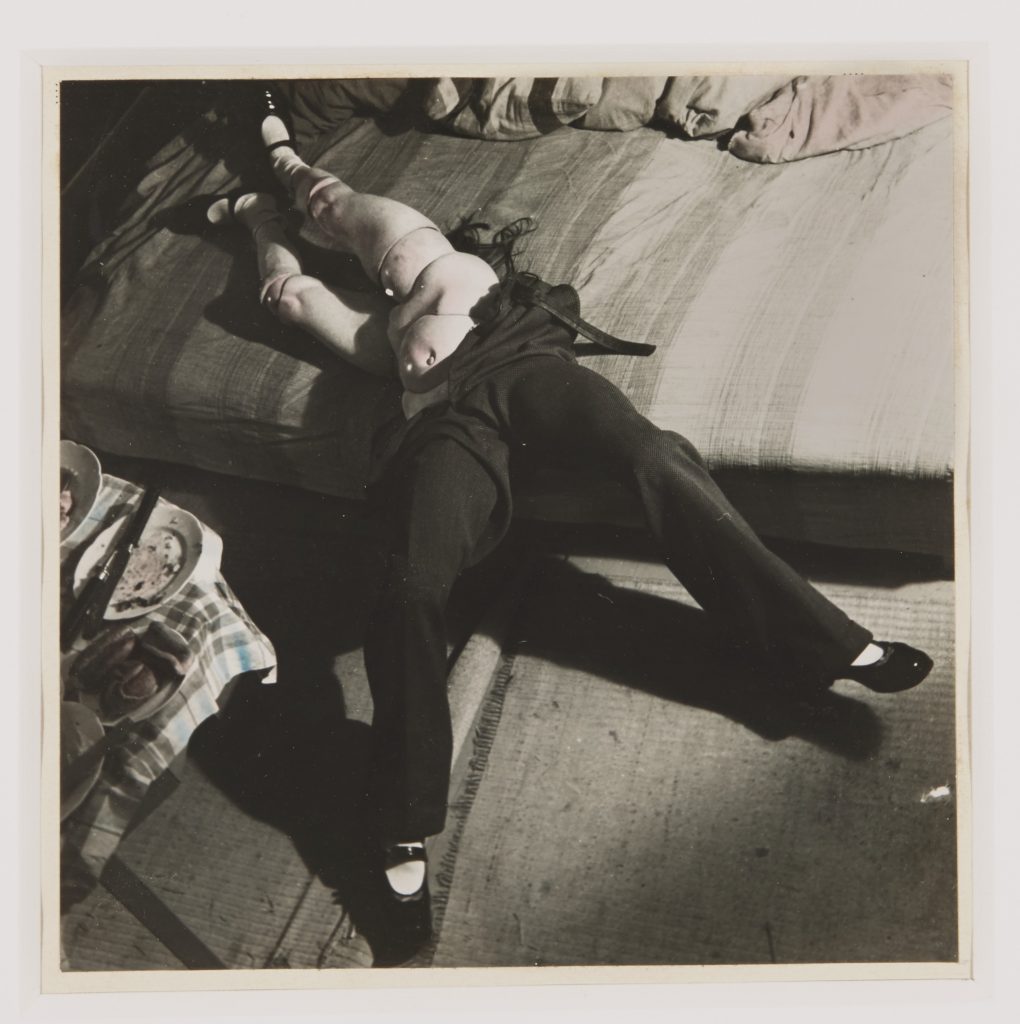Hans Bellmer (1902-1975)
Untitled, 1938
Silver print enhanced with aniline mounted on paper, c. 1949
Courtesy of the Leonid and Tatiana Nevzlin Collection
The German photographer Hans Bellmer fled Nazi Germany in 1938 and settled in Paris, where he joined the city’s Surrealist artists. This work is part of his Les Jeux de la Poupée, (The Games of the Doll) collection, published in 1939. The doll — with its incomplete anatomy — is a symbol that evokes fear, while combining Surrealist folly with the role of the unconscious.
Must Know
Hans Bellmer was born in the city of Kattowitz, then part of the German Empire (now Katowice, Poland). When the Nazis came to power in 1933, Bellmer rebelled against the regime and against his father, inventing a story to make people believe that he was of Jewish origin.
Bellmer is most famous for the creation of a series of dolls as well as photographs of them. Bellmer’s doll project is also said to have been catalysed by a series of events in his personal life.
Bellmer initiated his doll project to oppose the fascism of the Nazi Party by declaring that he would make no work that would support the new German state. Represented by mutated forms and unconventional poses, his dolls (according to this view) were directed specifically at the cult of the perfect body then prominent in Germany.[3] Bellmer produced the first doll in Berlin in 1933. And in 1934, in order to demonstrate his rejection of any authority, he used his great talent for craft to design an amazing piece of art entitled Die Puppe [The Doll]. This is a sculpture that represents a young woman dressed only in white socks and flat black shoes; it is nearly life size (1.40 m) and is composed of elements which interact using ball joints.
Bellmer used multiple variations of the doll’s position and recorded them photographically.
The artist took a number of photographs of The Doll in various poses and stages of construction, Soon the photographs of the Doll became as important as the sculpture itself: with their narrative function, they opened up new voyeuristic and fetishistic possibilities.
Bellmer’s work was eventually declared “degenerate” by the Nazi Party, and he was forced to flee Germany to France in 1938, where Bellmer’s work was welcomed by the Surrealists around André Breton.[5]
he aided the French Resistance during the war by making fake passports.[6] he was imprisoned in the Camp des Milles prison at Aix-en-Provence, a brickworks camp for German nationals, from September 1939 until the end of the Phoney War in May 1940.[7]
After the war, Bellmer lived the rest of his life in Paris.

